An Introduction to Goat Format
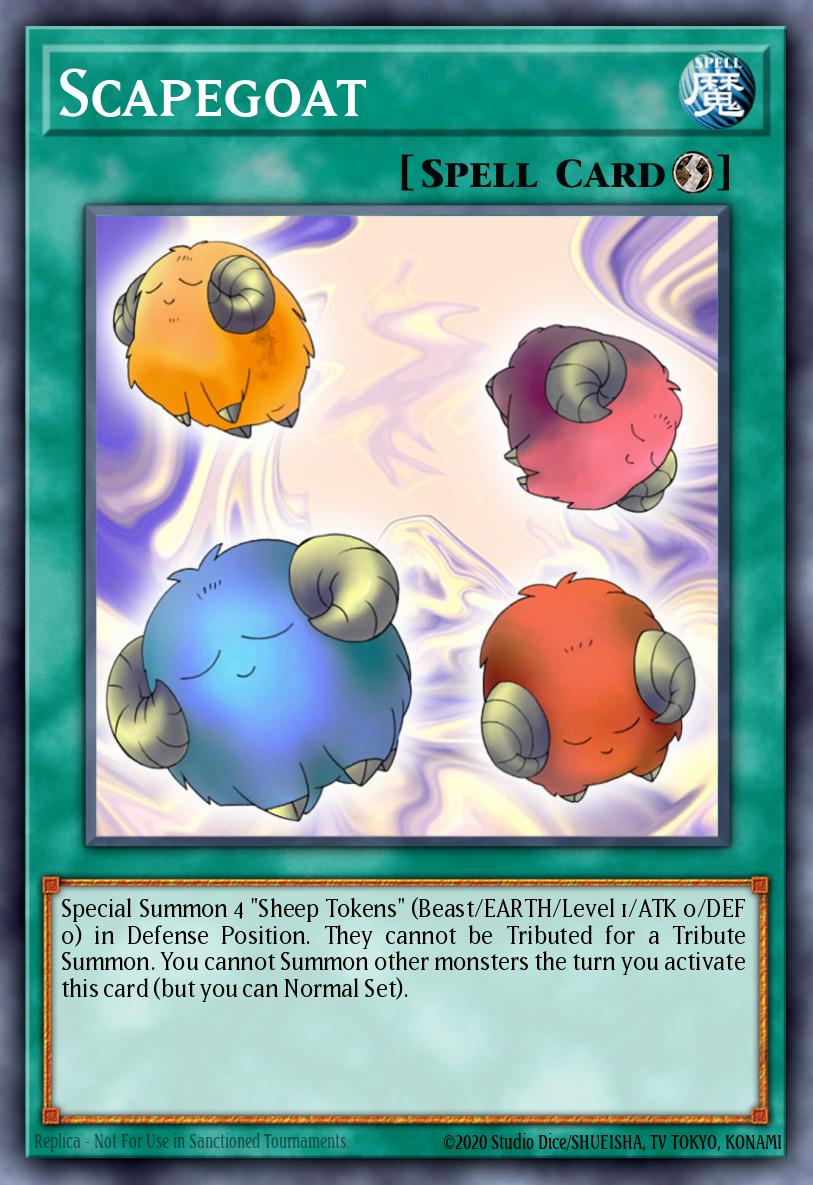 As mentioned, Goat Format is the format played between April and September 2005. The dominant deck of the format is Goat Control, which saw a staggering number of Top 8 finishes in Shonen Jump Championships (SJC's were the YCS's of old). However, there are a number of different decks that you can play - see "Basic Decks of Goat Format," below, for more on popular Goat Format decks.
As mentioned, Goat Format is the format played between April and September 2005. The dominant deck of the format is Goat Control, which saw a staggering number of Top 8 finishes in Shonen Jump Championships (SJC's were the YCS's of old). However, there are a number of different decks that you can play - see "Basic Decks of Goat Format," below, for more on popular Goat Format decks.Most people play the game the way it was between late June and August of 2005, as the format actually changed quite a bit over the course of its six months. For starters, battle position rules changed in June 2005. Prior to the battle position rule change, if a card was flipped face-down by a card effect (such as with Tsukuyomi), it could not be flipped face up. It counted as your manual battle position change. The rules were changed so that it didn't count as a manual switch. This is how the game was played between April and June of 2005.
The ruling change had a drastic effect on the game; without it, Goat Control as a deck simply does not exist. This is because it relies heavily on reusing both Flip Effect monsters and also Thousand-Eyes Restrict, which is one of the main boss monsters of the format. This is best seen in the old metagame archives - prior to the battle position rule changes, Zombies were actually quite dominant. Afterward, it was Goat Control all the way down.
Why Goat Format is so Popular
Goat Format is popular for several reasons. Perhaps its biggest draw is simple nostalgia; Goat Format was played before the Synchro mechanic existed, which predates Xyz, Pendulum and Link monsters. For many old-school duelists, Goat Format is representative of a time when players were players and not pilots. Decks were built through ingenuity as opposed to archetypes.
It's also quite a skillful format, particularly the Goat Control mirror match. But it emphasizes a different skill set from the modern game. Instead of memorizing long lines of plays, the key to winning in Goat Format is to maximize card value by using your cards at opportune times. It's a lot easier said than done!
Goat Format is also a lot cheaper than the modern game to play. Most Goat Format decks can be built in their entirety for under $50. Aside from a few cards such as Black Luster Soldier - Envoy of the Beginning, Delinquent Duo, and Metamorphosis, you can build a Goat Format deck for pennies on the dollar.
When you combine the low price of entry, the high skill ceiling, and the diversity in deckbuilding, Goat Format has quite a bit to offer any duelist. And the best part? It doesn't change! Decks may change, strategies will evolve, but the card pool is static. There's no anticipating new sets or cards, no waiting on reprints; once you have your deck built, you can play, and you don't have to change a thing.
The Goat Format Card Pool
Yu-Gi-Oh! is known for reprinting cards, but every card has an original release date. The overall Goat Format card pool includes any card released before and between April and September of 2005. However, due to how much for the format changed, there's actually a few different sub-formats of Goat Format. You can read about the various sub-formats below. Here's a breakdown of everything that was released and legal for play between April 1st and September 30th, 2005. If I missed something let me know!
Booster sets:
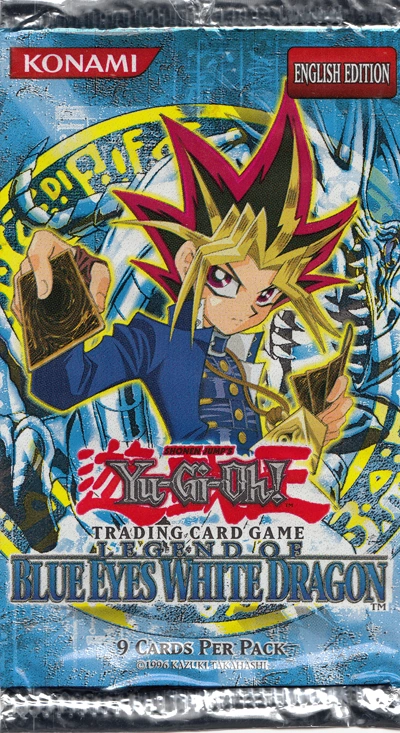 Legend of Blue Eyes White Dragon (prefix LOB)
Legend of Blue Eyes White Dragon (prefix LOB)Metal Raiders (prefix MRD)
Spell Ruler (originally released as Magic Ruler) (prefix SRL or MRL)
Pharaoh's Servant (prefix PSV)
Labyrinth of Nightmare (prefix LON)
Legacy of Darkness (prefix LOD)
Pharaonic Guardian (prefix PGD)
Magician's Force (prefix MFC)
Dark Crisis (prefix DCR)
Invasion of Chaos (prefix IOC)
Ancient Sanctuary (prefix AST)
Soul of the Duelist (prefix SOD)
Rise of Destiny (prefix RDS)
Flaming Eternity (prefix FET)
The Lost Millennium (prefix TLM)*
Cybernetic Revolution (prefix CRV)**
Reprint sets:
Dark Beginning 1 (prefix DB1)
Dark Beginning 2 (prefix DB2)
Dark Revelation 1 (prefix DR1)
Tournament Packs:
Tournament Pack: 1st Season (prefix TP1)
Tournament Pack: 2nd Season (prefix TP2)
Tournament Pack: 3rd Season (prefix TP3)
Tournament Pack 4 (prefix TP4)
Tournament Pack 5 (prefix TP5)
Tournament Pack 6 (prefix TP6)
Collectible Tins:
2002 Booster Pack Tins (prefix BPT)
2003 Booster Pack Tins (prefix BPT)
Collectible Tins 2004 (prefix CT1)
Collectible Tins 2005 (prefix CT2)***
*The Lost Millennium is legal in every iteration of Goat Format except pre-June 2005 Goat Format.
**Cybernetic Revolution (CRV) is only playable in Post-CRV Goat Format.
**The 2005 Collectible Tins (CT2) were released in September 2005. These cards are included in Exarion Format, but not Pre-Exarion Format.
Video game promotional cards:
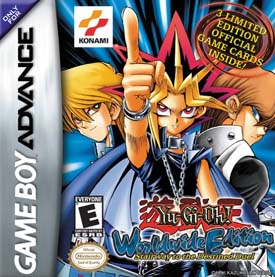 Dark Duel Stories (prefix DDS)
Dark Duel Stories (prefix DDS)Forbidden Memories (prefix FMR)
The Eternal Duelist Soul (prefix EDS)
The Duelists of the Roses (prefix DOR)
Worldwide Edition: Stairway to the Destined Duel (prefix SDD)
Power of Chaos: Yugi the Destiny (prefix PCY)
The Falsebound Kingdom (prefix TFK)
The Sacred Cards (prefix TSC)
World Championship Tournament 2004 (prefix WC4)
The Dawn of Destiny (prefix DOD)
Power of Chaos: Kaiba the Revenge (prefix PCK)
Reshef of Destruction (prefix ROD)
Power of Chaos: Joey the Passion (prefix PCJ)
Destiny Board Traveler (prefix DBT)
Capsule Monster Coliseum (prefix CMC)
World Championship Tournament 2005: 7 Trials to Glory (prefix WC5)
Nightmare Troubador (prefix NTR)*
*Note: Nightmare Troubador was released on August 30, 2005. As such, the promotional cards are only playable in Post-CRV Format.
Miscellaneous promotional cards:
McDonald's Promotional Cards (prefix MP1)
Movie Pack (prefix MOV)
Flaming Eternity Sneak Peek Promo Card (prefix SP1EN-001)
The Lost Millennium Sneak Peek Promo Card (prefix SP1EN-002)
Starter Decks:
Starter Deck: Yugi (prefix SDY)
Starter Deck: Kaiba (prefix SDK)
Starter Deck: Joey (prefix SDJ)
Starter Deck: Pegasus (prefix SDP)
Starter Deck: Yugi Evolution (prefix SYE)
Starter Deck: Kaiba Evolution (prefix SKE)
Structure Decks:
Structure Deck: Dragon's Roar (prefix SD1)
Structure Deck: Zombie Madness (prefix SD2)
Structure Deck: Blaze of Destruction (prefix SD3)
Structure Deck: Fury from the Deep (prefix SD4)
In addition, Shonen Jump promotional cards, Duelist League, and Hobby League cards were mostly all legal for Goat Format. If a card has a printing in one of the above, it's legal in at least some iteration of the format.
Variations of Goat Format
Because of how much the format actually evolved between April and September of 2005, there are a few variations of the format that you can play.
Pre-June 2005 Format
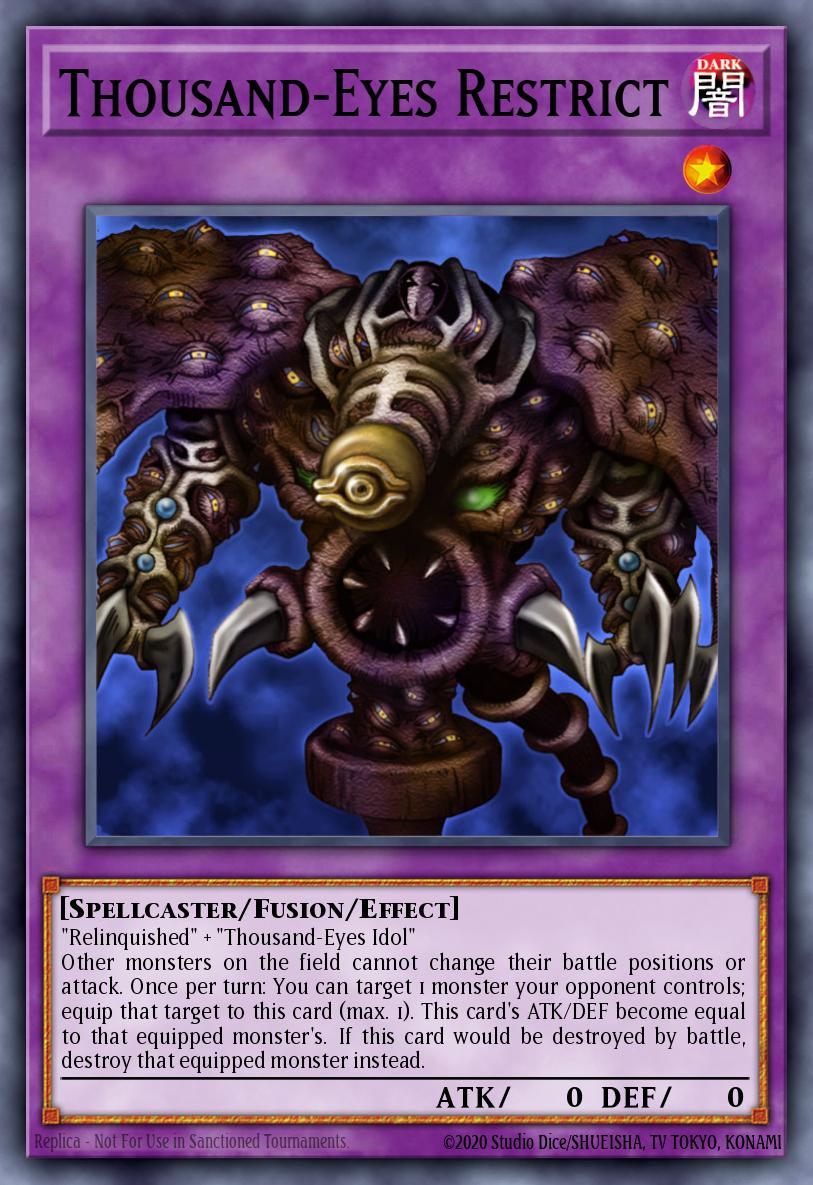 This format is not played by anyone, but it's an option. This is Goat Format before the June 2005 battle position rule changes, and is a large departure from the most popular Goat Format iterations. Goat Control isn't nearly as powerful, as you can't recycle a face-up Thousand-Eyes Restrict like you can post-battle position change. Some refer to this format as pre-The Lost Millennium, which was released in the TCG June 1st, 2005. Regardless, this format isn't nearly as fun as the Goat Format people play today.
This format is not played by anyone, but it's an option. This is Goat Format before the June 2005 battle position rule changes, and is a large departure from the most popular Goat Format iterations. Goat Control isn't nearly as powerful, as you can't recycle a face-up Thousand-Eyes Restrict like you can post-battle position change. Some refer to this format as pre-The Lost Millennium, which was released in the TCG June 1st, 2005. Regardless, this format isn't nearly as fun as the Goat Format people play today.Note that The Lost Millennium is not included in this format.
This format is dominated by aggressive decks such as Warriors and Zombies. You can look at SJC Los Angeles, SJC Houston, and the 2005 UK National Championships for information and winning decklists for Pre-June 2005.
Pre-Exarion Format
Pre-Exarion, as this variation is called, includes all cards released prior to both Cybernetic Revolution and the 2005 Collectible Tins (which included Exarion Universe). As of this writing, this is the most popular version of Goat Format. Note that you can use The Lost Millennium cards in this version.
This format saw the rise of "Goat Control" as we know it. Historically, SJC New Jersey, SJC Charlotte, the 2005 U.S. National Championships, SJC Seattle, and SJC Indianapolis were all played under these conditions. There was a lot of innovation even back in 2005 and the sheer number of events played under these conditions make it the go-to Goat Format for players looking for historical accuracy.
Moving forward, this is the format that I write about, unless I specifically say otherwise in the article.
Exarion Format
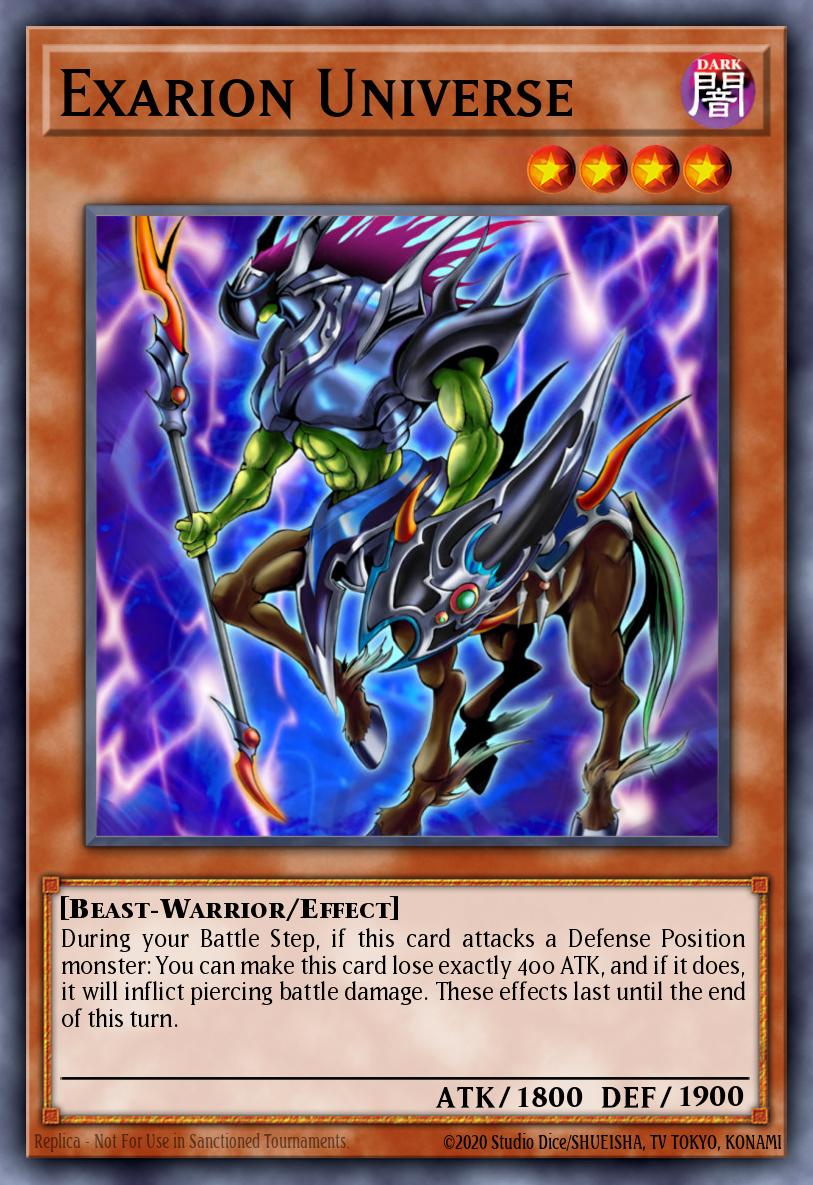 />Exarion Format is basically pre-Exarion with Exarion Universe included in the card pool. This is not a historically accurate format, but was how people played during the Goat Format Revival Period of 2012-2016. Really, until Duel Network shut down, Exarion Universe was included in the card pool, despite being historically inaccurate. This was because most people who began playing in this period drew from Kris Perovic's SJC Boston decklist. That deck included Exarion Universe, but not Cyber Dragon, which was also legal for the event. As such, most people chose to play with Exarion Universe but without Cyber Dragon or the rest of CRV.
/>Exarion Format is basically pre-Exarion with Exarion Universe included in the card pool. This is not a historically accurate format, but was how people played during the Goat Format Revival Period of 2012-2016. Really, until Duel Network shut down, Exarion Universe was included in the card pool, despite being historically inaccurate. This was because most people who began playing in this period drew from Kris Perovic's SJC Boston decklist. That deck included Exarion Universe, but not Cyber Dragon, which was also legal for the event. As such, most people chose to play with Exarion Universe but without Cyber Dragon or the rest of CRV.No Shonen Jump Championships were played under these conditions. However, the format is still popular in certain circles, notably the Nostalgic Duelist metagame. A lot of the information that's out there now dates from Exarion Format, though, which is why a lot of people still cling to this format as the Goat Format. Regardless, not having any historical precedence turns a lot of current Goat Format players away from this particular format. Whether or not it's better than Pre-Exarion Format is up for grabs. Considering that the format has been soft-solved by the Perovic Build, there's not a lot of variation in Goat Control decks. Much of the innovation of the format is concentrated to Chaos, alt-win and OTK decks.
This format is much more aggressive than Pre-Exarion format, as Exarion Universe is a very aggressive card. See my article about Exarion Universe for more about how the card warps the format. You can read about Exarion Format decklists on Format Library.
Post-CRV Format
Post-CRV Format includes Cybernetic Revolution cards in the Goat Format card pool. This was historically only seen at SJC Boston 2005, which took place in early September. The consensus among most Goat Format players is that Post-CRV Format is a much different format than Pre-Exarion or Exarion formats, which it is.
The inclusion of Cyber Dragon and its fusions takes away quite a bit of what makes Goat Format fun for many players. It sees sporadic play, but there are no major Goat Format tournaments hosted today that include Cybernetic Revolution in its card pool. It is, however, widely regarded as being more fun than originally thought. Much like pre-June 2005 format, it is sorely lacking in exploration, as most players stick to either Pre-Exarion or Exarion formats.
The only major tournament played under these conditions was SJC Boston.
Popular Decks of Goat Format
The following decks are currently popular in the Goat Format metagame, regardless of which variation you're playing. This is not an all-inclusive list; Goat Format has a surprisingly high amount of viable decks you can play. Part of this is because of how many power cards are available. But there were a lot of strategies available; the following are simply the most popular of the format. You can read more about popular decks right here in this article on YGOPRODeck.com.
Goat Control
In Goat Format, Goat Control is the deck to beat. It is powerful, versatile, and devastating in the right hands. It focuses on controlling the game via flip monsters, powerful spells, and, of course, Thousand-Eyes Restrict, Metamorphosis, Tsukuyomi, and Scapegoat. Most players of Goat Format consider it to be the best deck of the format, and also the most difficult to play correctly. However, correct play leads to high win/loss ratios, perhaps higher than any other deck of the format. If you're new to Goat Format, you should play Goat Control. Not only is it the best deck of the format, it has the highest skill ceiling of any other deck. You can learn to play literally any other deck of the format perfectly and still lose to someone who plays Goat Control perfectly.
Besides, it's not named Chaos Format, is it?
Chaos
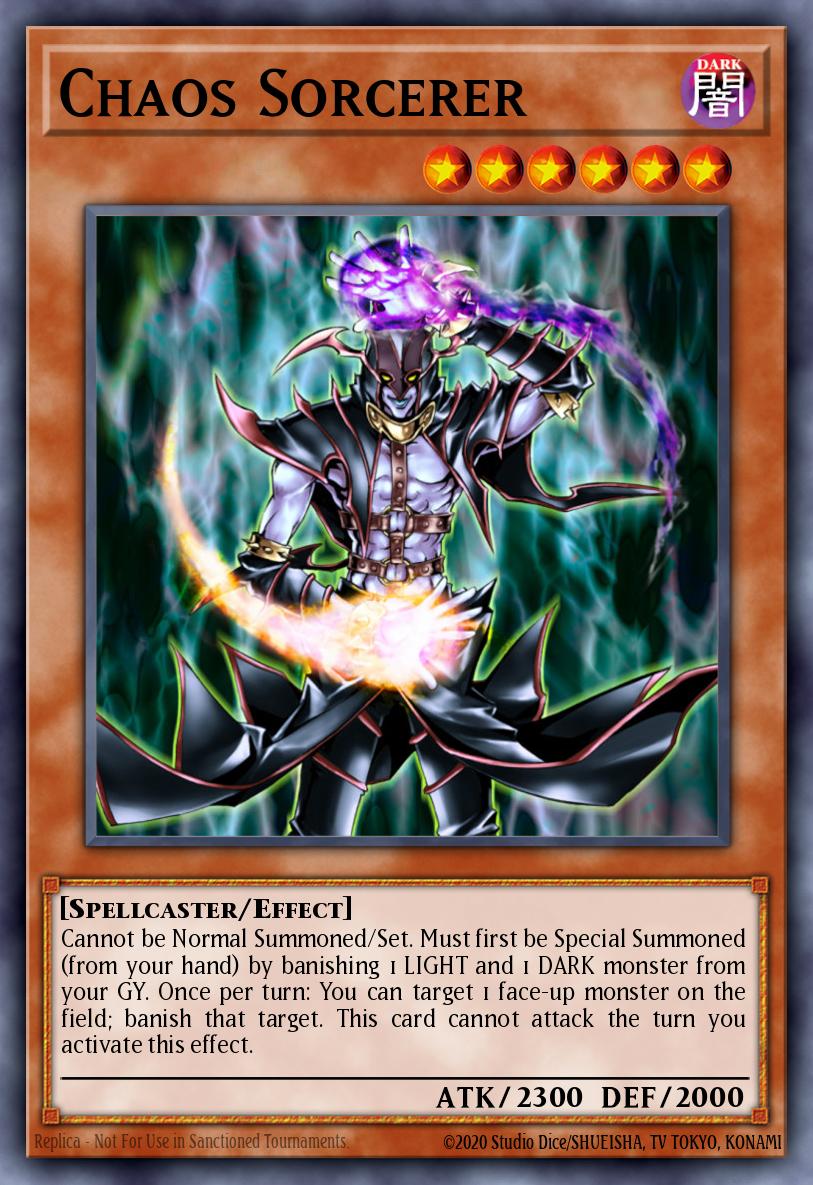 Chaos comes in many forms, but they all focus on Chaos Sorcerer to generate advantage and mitigate the advantages that Goat Control has. Chaos was not very popular back in 2005. Maybe people didn't realize it's potential. Maybe people just were too busy focusing on beating Goat Control. Regardless, the deck has gained both prominence and notoriety since the Revival Period. Nowadays, it is firmly entrenched as one of the primary challengers for Goat Control
Chaos comes in many forms, but they all focus on Chaos Sorcerer to generate advantage and mitigate the advantages that Goat Control has. Chaos was not very popular back in 2005. Maybe people didn't realize it's potential. Maybe people just were too busy focusing on beating Goat Control. Regardless, the deck has gained both prominence and notoriety since the Revival Period. Nowadays, it is firmly entrenched as one of the primary challengers for Goat ControlThere are a number of ways to build Chaos: Control, Turbo, Return, Recruiter, and, of course, variations of each. While it sees lower win/loss ratios unless in the hands of a top-level player, it is built to counter Goat Control. So, naturally, it's going to steal wins. Right now Chaos is quite popular in the Format Library metagame, though it sees less play in the Nostalgic Duelist meta. You can read an intro to Chaos Control here, and Chaos Turbo here.
Alt-win
Alt-win has always been a part of Yu-Gi-Oh!, and it's no different in Goat Format. There are a number of Alt-win decks including Exodia, Empty Jar, Last Turn, and Burn. These decks are not nearly as popular as Goat Control or Chaos, but they can see high win/loss ratios in the hands of a skilled player. Empty Jar in particular has seen play at higher levels.
These decks are fun and are attractive, especially for newer players, but they should not be played regularly or consistently. While everyone has their own definitions of "fun," much of the draw of Goat Format is the fact that matches have a high amount of player interaction. Alt-win (and OTK decks for that matter) has much lower interaction due to the nature of their win conditions. As a result, don't be surprised if you have some salty opponents if you beat them with alt-win!
OTK
OTK decks, like alt-win decks, aren't all that popular but do see play. The major ones in Goat Format include Ben-Kei OTK and Rescue Cat OTK. There's also the ever-popular (yet highly volatile) Dimension Fusion Turbo and Machine OTK. Cyber Stein OTK is also a viable deck, as Stein was legal for Goat Format play. However, it sees more play in Post-CRV Goats due to the release of Cyber Twin Dragon, which makes the OTK a lot easier.
OTK decks don't see a lot of play, but they're a part of the format and should be understood.
Basic Strategies of Goat Format
Goat Format is widely considered one of the most skillful formats of all time. As such, there are a few basic strategies that you can employ to immediately see improvement in your win-loss ratios. It's true that as the format ages strategies will come and go. At the same time, much of what you read below will not change; these are sort of the "building blocks" of Goat Format strategies.
Playing the numbers game
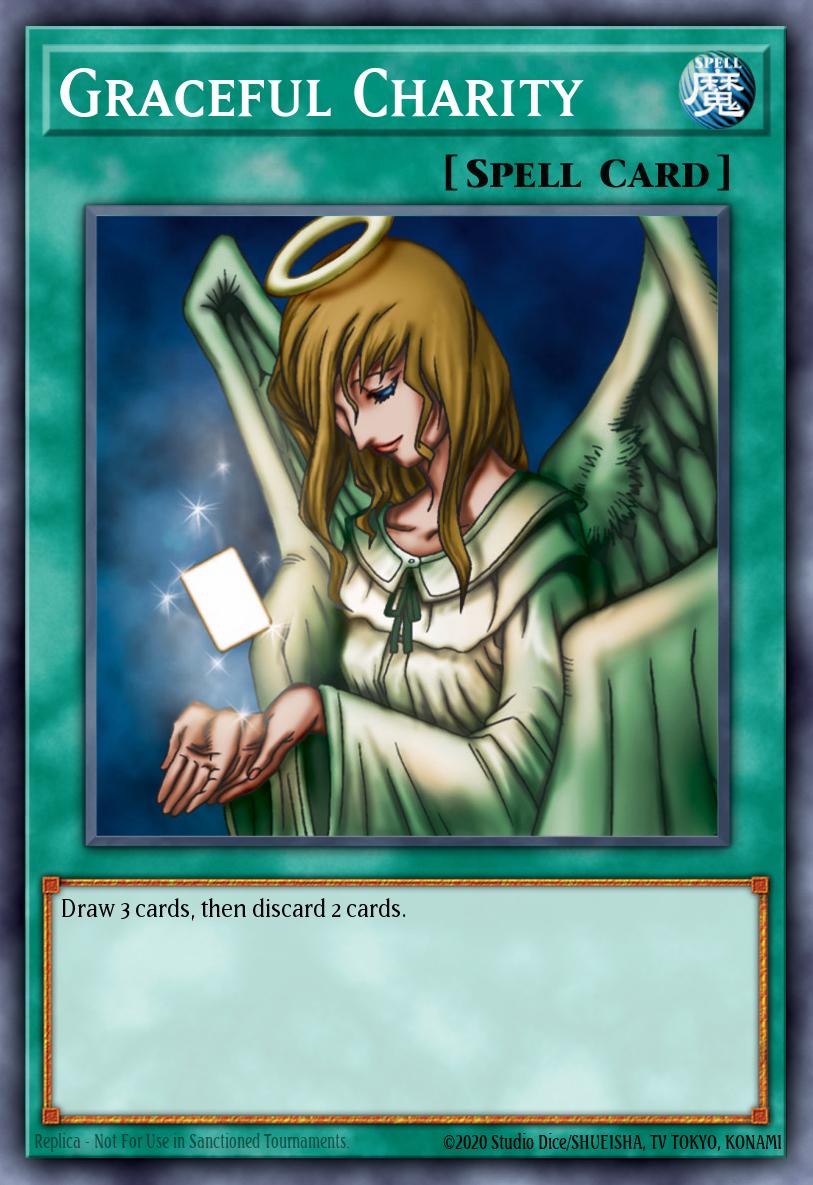 Unlike in the modern game, in Goat Format matches you don't make huge boards turn one. It's a very passive, control-oriented format that requires maximizing card value to maintain numerical advantage. Like the modern game, pluses and minuses dictate how games go. But unlike the modern game, you're not going to go +5 in a turn. More importantly, going more than +1 in a single turn often turns the tides in your favor.
Unlike in the modern game, in Goat Format matches you don't make huge boards turn one. It's a very passive, control-oriented format that requires maximizing card value to maintain numerical advantage. Like the modern game, pluses and minuses dictate how games go. But unlike the modern game, you're not going to go +5 in a turn. More importantly, going more than +1 in a single turn often turns the tides in your favor.Because of how many turns there are, it's easy to "waste" power cards, of which there are many. It's nice being able to play Graceful Charity, but it's not as nice when you have to discard two cards that you really don't want to get rid of. Therefore, knowing when to use your power cards is a crucial skill.
The number one goal should always be to maximize card value and card advantage. Using Magician of Faith to bring back a Spell Card is great, but it's even greater when you're able to recycle that Magician of Faith with Tsukuyomi. Making plays that gain free +1's is one of the hallmarks of the format.
Understanding when your cards will have the highest impact in the game is not an innate skill; it's learned through playing lots and lots of games. This is one of the great things about Goat Format - because the card pool doesn't change, you can play and play and get better without worrying about keeping up with the format.
Understand how cards work together
Goat Control, as a deck, has a lot of combos at its disposal. Understanding when to use those combos, how to set them up, and how to maximize their value is a crucial part of winning consistently. This is known as "synergy" - how well your cards work together to win the game. Goat Control has a lot of synergy when played correctly, but can be very disjointed if you're not thinking about what you're doing.
Winning in Goat Format means understanding not only how your deck works, but how all the other decks in the format work as well. In this it's not unlike the modern game. Unlike the modern game, however, there aren't one or two things you have to stop your opponent from doing; there are literally dozens of things you have to stop them from doing, over the course of as many turns.
It's more than just the cards
Because of how long games last, there's a high amount of player interaction. This means that you're going to be seeing a lot of cards in any given duel, and it's important to be able to "read" opposing cards.
Reading cards is yet another skill that is learned, and it gets easier the more you play and the more you think about the game. It's easy to try to play around a hand trap in game 1 of modern - either they have it or they don't. But in Goat Format, many players will wait on activating Trap cards, or hold off on destructive combos, so they ensure that they work properly and don't get disrupted.
In this, you're playing your opponent as much as you're playing your opponent's deck. Understanding the why behind everything your opponent does will make it much easier to predict what they will play next, and will help you set yourself up to counter it. This goes hand in hand with the previous point regarding knowing the decks of the format and how they work. The more you know about the metagame as a whole, the better prepared you will be to counter it.
Maximizing risk vs reward
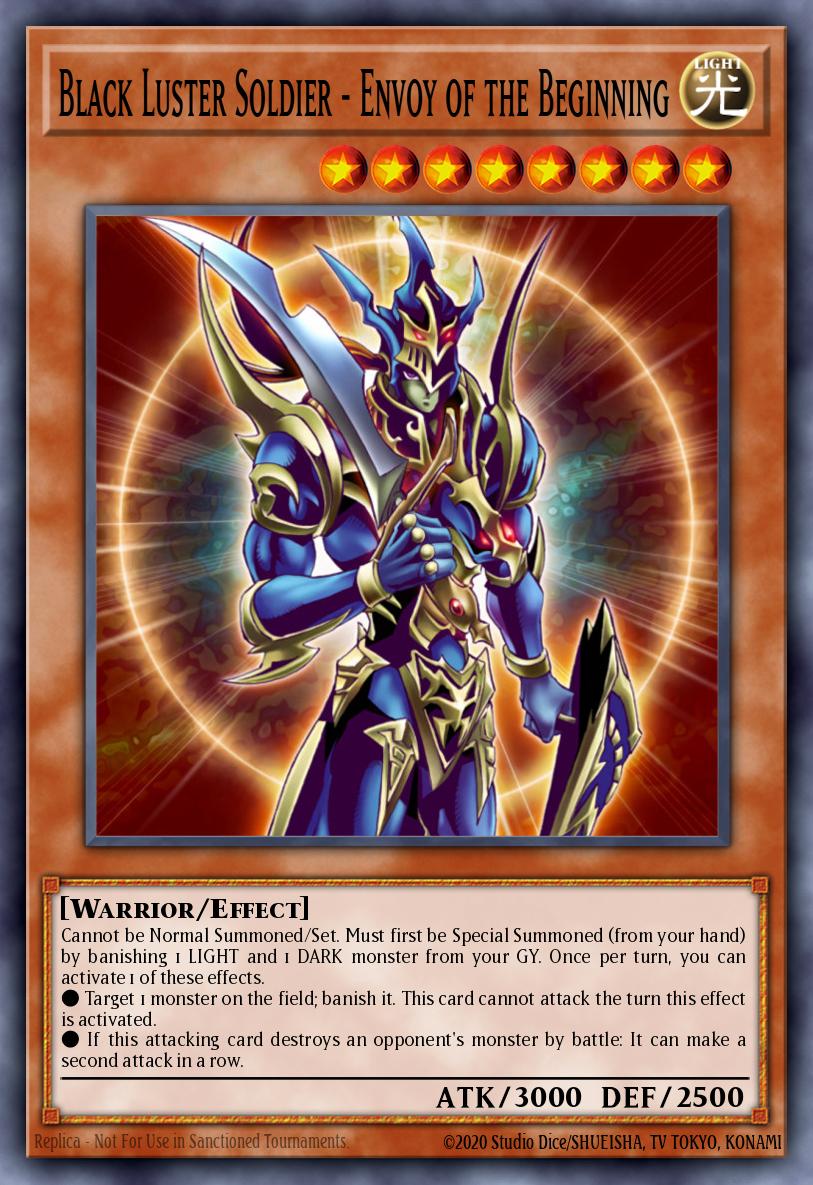 The risk vs reward dynamic is very much a part of Goat Format. It's one thing to play it safe, keep a lot of cards, and try to whittle your opponent down to 0 LP. But it's a lot easier said than done. Playing it safe all the time will almost always leave opportunities on the table. While it's good to always have a card or two over your opponent, if you're passing on potential aggressive options, that conservative playstyle will come to bite you in the behind.
The risk vs reward dynamic is very much a part of Goat Format. It's one thing to play it safe, keep a lot of cards, and try to whittle your opponent down to 0 LP. But it's a lot easier said than done. Playing it safe all the time will almost always leave opportunities on the table. While it's good to always have a card or two over your opponent, if you're passing on potential aggressive options, that conservative playstyle will come to bite you in the behind.You have to know how to minimize risk while maximizing reward. A prime example is Black Luster Soldier - Envoy of the Beginning. BLS is the "queen" of Goat Format - it is the most powerful card in the Goat Control deck and is often used as a late-game finisher more than anything. But sometimes, dropping it early game, when there are still lots of threats that can get rid of it, can be a way to seal the game before the opponent can counter it. It's not always a good plan, but sometimes it is.
You want to minimize risk and maximize reward. But you also have to know when it's okay to take risks that will yield strong rewards, but at a higher risk. Normally you don't want to play cards that can't be protected, but sometimes it's the best way to seal a game. The more you play, the easier it gets to spot when those plays are best and when they won't work.
Mind games are a thing
I mentioned the art of "reading" cards. Mind games are somewhat of an extension of that. Because of how slow and interactive Goat Format is, there are a number of things you can do to "psych out" your opponent.
One of my favorite anecdotes is actually from back in 2005. Rhymus Lizo was playing at an SJC and he desperately wanted his opponent to attack multiple monsters into his set Mirror Force. He had taken battle damage the turn prior, so he acted like he was preparing to take damage again that turn. Specifically, he reached for the pen he used to calculate LP. And his opponent attacked with multiple monsters right into his Mirror Force.
Mind games, really, are an important part of the format, much more so than in the modern game. And they can be something simple, such as a bluffed set, or something trickier, like Rhymus' play. And a whole host of things in-between.
Many players will use their reads to get a bead on what you have in your hand. So misrepresenting what you have by playing in an unorthodox manner is a type of mind game. The psychology of Goat Format is pretty intricate and there are a lot of ways you can play mind games with your opponent. Playing, and getting better, and seeing them and using them, are the best way to improve your mind game game.
You have to play to improve
At the end of the day, any "good" strategy has flaws and weaknesses. There is nothing surefire about Goat Format, and it's up to you to find both yours and your opponent's weaknesses and either shore them up or exploit them as necessary. This comes with time, playing, and thinking about your play. If you want to improve, you have to play, you have to talk, and you have to be willing to see your mistakes and improve them. Being delusional about your skill level is the fastest route to mediocrity in Goat Format.
Conclusion
There's a lot more to Goat Format, and we'll be exploring more about the format as the weeks and months go on. But for now, hopefully this was a good introduction to a format that is really a lot of fun and skillful. There's a little bit for everyone with Goat Format. Nostalgic players can get their fix, competitive players can play at a high skill level, and the rest of us get a nice break from the fast-paced, OTK-oriented nature of the modern game.
That's it for this time. As always, you can contact me any time on the YGOPRODeck forums or at [email protected].




